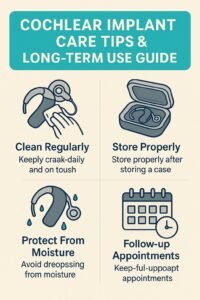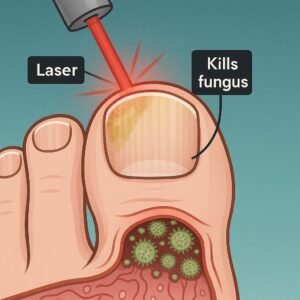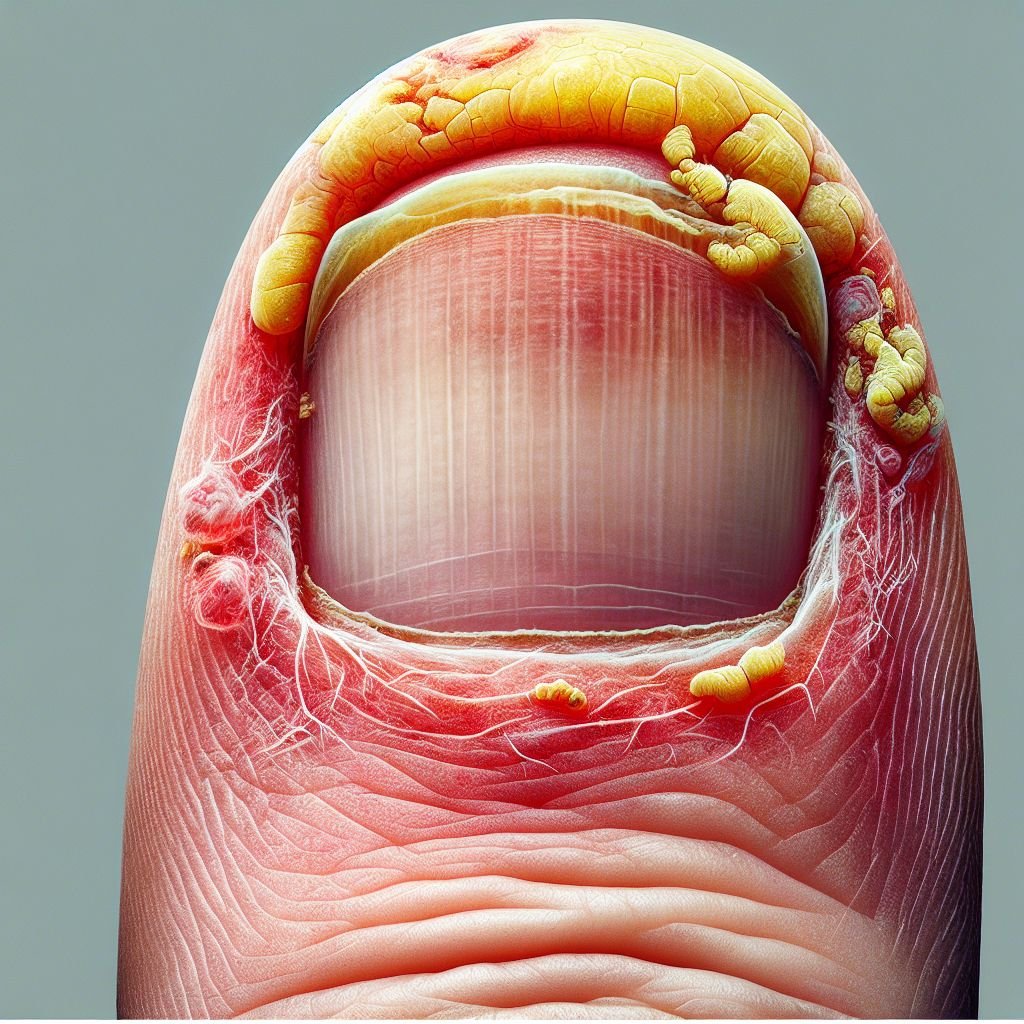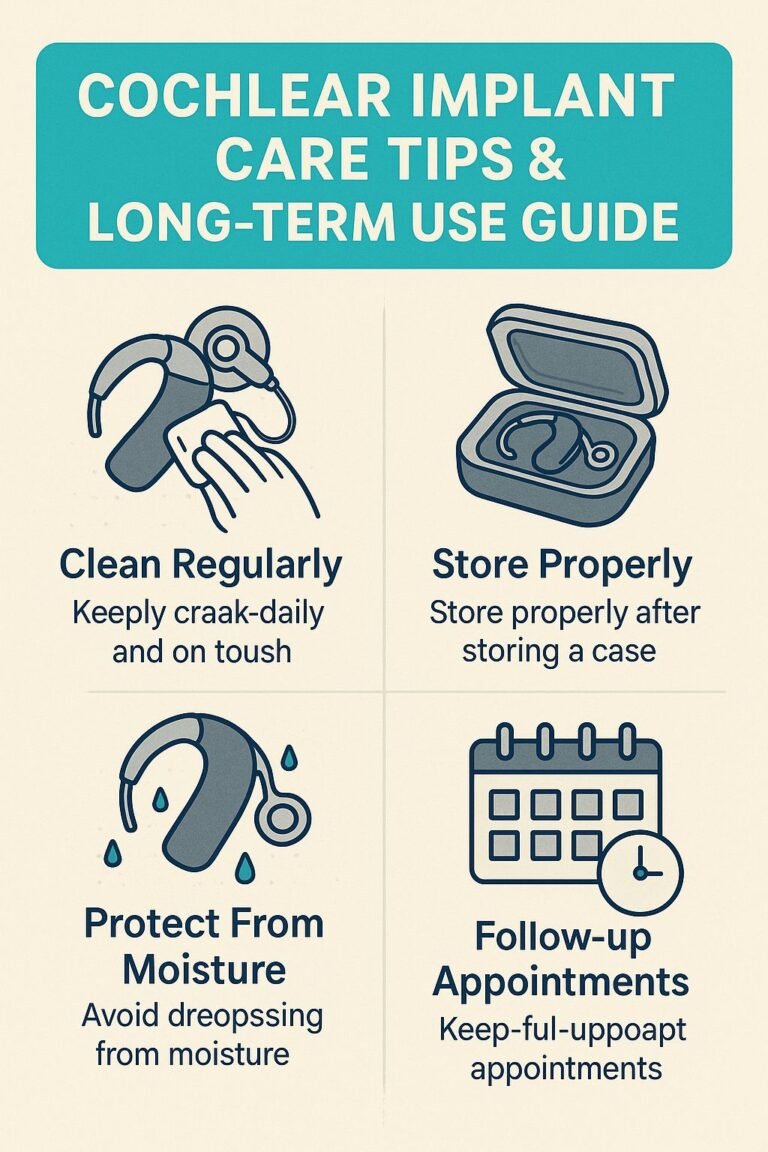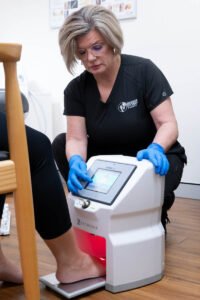Key Takeaways
Toenail fungus, though common, can be effectively managed with the right approach.
- Identify early signs like discoloration or thickening of the toenail to start treatment promptly.
- Timely treatment is crucial to prevent further nail damage and potential spread of the fungus.
- Use over-the-counter antifungal creams or prescription medications as recommended by a healthcare professional.
- Natural remedies such as tea tree oil and vinegar soaks can be effective in mild cases.
- Maintaining good foot hygiene and wearing breathable footwear can help prevent recurrence.
Immediate Steps to Address Toenail Fungus
When you first notice signs of toenail fungus, acting quickly is key. This common condition often starts subtly, with a small white or yellow spot under the tip of your toenail. But don’t let its humble beginnings fool you. Ignoring these early signs can lead to more severe symptoms, including nail thickening, crumbling edges, and even separation of the nail from the nail bed.
Recognizing Early Signs
Spotting the early signs of toenail fungus can be tricky but not impossible. The most common indicators include:
- Yellow or white spots appearing under the nail tip.
- Thickened or brittle nails.
- Distorted nail shape.
- A dark color caused by debris building up under the nail.
- A foul smell coming from the nail.
Recognizing these symptoms early gives you a head start on treatment, potentially saving you from more severe complications.
Why Timely Treatment Matters
Addressing toenail fungus promptly is crucial. The longer you wait, the harder it becomes to treat. Fungus thrives in warm, moist environments and can spread to other nails or even to your skin, causing athlete’s foot. Besides that, untreated toenail fungus can lead to pain and permanent nail damage. For effective solutions, explore best toenail fungus treatment remedies.
Most importantly, if you have diabetes or a weakened immune system, untreated toenail fungus can lead to more serious infections. Therefore, it’s essential to take action as soon as you notice any signs of infection.
Top Toenail Fungus Treatment Tips
There are various treatment options available, ranging from medications to natural remedies. Choosing the right treatment depends on the severity of the infection and your personal preference. Let’s explore some of the most effective treatments.
Antifungal Medication Options
For more severe cases of toenail fungus, antifungal medications are often the most effective solution. These can be topical or oral medications prescribed by a healthcare professional. Topical treatments include antifungal creams and nail lacquers, while oral medications such as terbinafine and itraconazole are taken by mouth.
Here’s a quick comparison of common antifungal medications:
| Medication | Form | Duration | Effectiveness |
|---|---|---|---|
| Terbinafine | Oral | 6-12 weeks | High |
| Itraconazole | Oral | 6-12 weeks | Moderate |
| Ciclopirox | Topical | 48 weeks | Low to Moderate |
These medications require a prescription and may have side effects, so it’s essential to discuss them with your doctor before starting treatment.
Effective Home Remedies
If you’re looking for natural alternatives, several home remedies can help manage mild toenail fungus infections. Tea tree oil, known for its antifungal properties, is a popular choice. Simply apply a few drops directly to the affected nail twice a day.
Vinegar soaks are another easy home remedy. Mix one part vinegar with two parts water and soak your feet for 20 minutes daily. This acidic environment can help inhibit fungal growth.
While these remedies can be effective, it’s important to remember that they may take longer to show results compared to conventional medications. Consistency is key.
Importance of Foot Hygiene
Maintaining good foot hygiene is crucial in both preventing and managing toenail fungus. It serves as the first line of defense against fungal infections. By keeping your feet clean and dry, you create an environment that is less conducive to fungal growth. Make it a habit to wash your feet daily with soap and water, ensuring you dry them thoroughly, especially between the toes.
Besides that, consider wearing breathable socks made of natural fibers like cotton or wool, as these help absorb moisture and allow your feet to breathe. Change your socks daily, or more often if they become damp. Also, choose shoes that fit well and are made from breathable materials to prevent moisture buildup.
Mindset Strategies for Dealing with Toenail Fungus
Dealing with toenail fungus can be frustrating, but adopting the right mindset can make a significant difference in your treatment journey. It’s important to remember that you’re not alone, and with persistence, you can overcome this condition.
Overcoming Stigma and Embarrassment
One of the biggest challenges people face with toenail fungus is the stigma and embarrassment associated with it. It’s easy to feel self-conscious about the appearance of your nails, but remember, toenail fungus is a common condition that many people experience. You shouldn’t feel ashamed or isolated.
Most importantly, talk to someone you trust about your condition. Sharing your experience can help alleviate feelings of embarrassment and provide you with the support you need. Remember, seeking treatment is a proactive step towards healthier nails.
Adopting a Positive and Patient Attitude
Toenail fungus treatment requires patience. Results can take time, often several months, depending on the severity of the infection and the treatment method. It’s crucial to maintain a positive attitude and remain committed to your treatment plan.
Set realistic expectations for yourself. Understand that improvement will be gradual and that consistency is key. Celebrate small victories along the way, such as reduced discoloration or less thickening of the nail. For more information on effective remedies, check out these best toenail fungus remedies.
- Stay consistent with your treatment regimen.
- Track your progress by taking photos of your nails regularly.
- Reward yourself for sticking to your treatment plan.
By keeping a positive outlook, you’ll find it easier to stay motivated and committed to your journey towards healthier nails.
Tracking Progress and Staying Motivated
Monitoring your progress is an excellent way to stay motivated throughout your treatment. Take photos of your nails at regular intervals to visually track improvements. This can help you see the gradual changes that might not be noticeable day-to-day. For more tips, check out our guide on toenail fungus treatment remedies.
Keep a journal to document any changes in your symptoms or feelings about your treatment. This practice not only helps you stay engaged but also provides valuable information to discuss with your healthcare provider if needed.
Support Systems and Resources
Having a support system can make a significant difference in your treatment journey. Whether it’s friends, family, or online communities, connecting with others can provide encouragement and valuable insights.
When to Consult a Doctor
While many cases of toenail fungus can be managed at home, there are times when professional medical advice is necessary. If your symptoms worsen, or if you experience pain or nail detachment, consult a doctor. They can provide a more accurate diagnosis and recommend stronger treatments, such as prescription antifungal medications.
It’s also important to seek medical attention if you have underlying health conditions like diabetes, as toenail fungus can lead to more serious complications.
Online Communities and Support Groups
Engaging with online communities and support groups can be incredibly beneficial. These platforms allow you to share experiences, ask questions, and receive advice from others who have faced similar challenges. They offer a sense of community and reassurance that you’re not alone in your journey.
Most importantly, these groups can provide practical tips and encouragement to help you stay committed to your treatment plan. Remember, sharing your experiences can also help others who are dealing with the same condition.
Conclusion: Your Path to Healthy Nails
Achieving healthy nails is a journey that requires patience, consistency, and a proactive approach. By recognizing early signs of toenail fungus and addressing them promptly, you can prevent more severe complications. Whether you choose medical treatments or natural remedies, the key is to remain committed to your chosen plan.
Remember, maintaining good foot hygiene and making lifestyle changes can significantly reduce the risk of recurrence. With the right mindset and support, you can overcome toenail fungus and enjoy healthier, more beautiful nails. For more on maintaining a positive outlook, explore overcoming challenges with the right mindset.
Frequently Asked Questions (FAQ)
Understanding toenail fungus and its treatment can help you make informed decisions about your foot health. Here are some common questions and answers to guide you.
What are the first signs of toenail fungus?
The initial signs of toenail fungus can be subtle but are crucial to recognize early. Typically, you might notice a small white or yellow spot under the tip of your toenail. This spot may gradually expand, leading to further discoloration and nail thickening. For more information on effective treatments, check out these best toenail fungus treatment remedies.
As the infection progresses, the nail may become brittle, and you might observe a dark color due to debris building up under the nail. A foul smell may also develop. Identifying these early signs can help you start treatment before the condition worsens. For more information on effective remedies, check out these best toenail fungus treatment remedies.
How long does it take to see improvement with treatment?
The timeline for improvement varies depending on the severity of the infection and the treatment method. For mild cases treated with topical solutions, you might start seeing results within a few weeks, but full recovery can take several months.
Oral antifungal medications may show improvement in about 6 to 12 weeks, but the nail will continue to grow out clear over several months. Consistency and patience are essential, as toenail fungus can be stubborn and slow to resolve.
Can toenail fungus spread to other parts of the body?
Yes, toenail fungus can spread to other nails and even to the skin, causing conditions like athlete’s foot. It thrives in warm, moist environments, so it’s important to keep your feet clean and dry. For more information on effective treatments, check out these best toenail fungus treatment remedies.
If you notice signs of spreading, such as redness, itching, or scaling on your feet or between your toes, it’s important to treat these areas promptly to prevent further spread. For effective solutions, you can explore toenail fungus treatment remedies.
Are there side effects to antifungal medications?
Antifungal medications, especially oral ones, can have side effects. Common side effects include gastrointestinal issues like nausea and diarrhea, as well as headaches and skin rashes.
In rare cases, oral antifungal medications can affect liver function, so regular monitoring by a healthcare professional is recommended during treatment. Always discuss potential side effects with your doctor before starting any medication.
How can I prevent toenail fungus from returning?
Preventing recurrence involves maintaining good foot hygiene and making smart lifestyle choices. Always keep your feet clean and dry, and wear breathable footwear and moisture-wicking socks.
- Trim your nails straight across and file down thickened areas.
- Disinfect nail clippers and other pedicure tools after each use.
- Avoid walking barefoot in communal areas like locker rooms and swimming pools.
- Consider using antifungal sprays or powders in your shoes.
Is it possible to treat toenail fungus naturally?
Yes, there are several natural remedies that can be effective for treating mild toenail fungus. Tea tree oil, known for its antifungal properties, can be applied directly to the affected nail twice daily.
Vinegar soaks, using a mixture of one part vinegar to two parts water, can also help inhibit fungal growth. These natural methods may take longer to show results, but they are a viable option for those seeking non-medical treatments.


